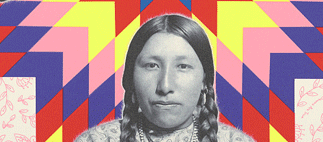Native American Heritage Month is celebrated in November to honor the culture, traditions, and achievements of Native Americans, Alaska Natives, Native Hawaiians, and affiliated Island communities.
What started at the turn of the century as an effort to gain a day of recognition for the significant contributions the first Americans made to the establishment and growth of the U.S., has resulted in a whole month being designated for that purpose.
One of the very proponents of an American Indian Day was Dr. Arthur C. Parker, a Seneca Indian, who was the director of the Museum of Arts and Science in Rochester, N.Y. He persuaded the Boy Scouts of America to set aside a day for the "First Americans" and for three years they adopted such a day. In 1915, the annual Congress of the Amertican Indian Association meeting in Lawrence, Kansas, formally approved a plan concerning American Indian Day. It directed its president, Rev. Sherman Coolidge, an Arapahoe, to call upon the country to observe such a day. Coolidge issued a proclamation on Sept. 28, 1915, which declared the second Saturday of each May as an American Indian Day and contained the first formal appeal for recognition of Indians as citizens.
The year before this proclamation was issued, Red Fox James, a Blackfoot Indian, rode horseback from state to state seeking approval for a day to honor Indians. On December 14, 1915, he presented the endorsements of 24 state governments at the White House. There is no record, however, of such a national day being proclaimed.
The first Amertican Indian Day in a state was declared on the second Saturday in May 1916 by the governor of New York. Several states celebrate the fourth Friday in September. In Illinois, for example, legislators enacted such a day in 1919. Presently, several states have designated Columbus Day as Native American Day, but it continues to be a day we observe without any recognition as a national holiday.
In 1990 President George H.W. Bush approved a joint resolution designating November 1990 "National American Indian Heritage Month." Similar proclamations, under variants on the name (including "Native American Heritage Month" and "National American Indian and Alaska Native Heritage Month") have been issued each year since 1994.
Information obtained from The Library of Congress
Interesting Facts:
The number of federally recognized Indian tribes in 2023 were 574
The 3 largest American Indian tribal groupings are Navajo, Cherokee and Mexican American Indian
3 largest Alaska Native tribal groupings are Yup'ik, Inupiat and Alaskan Athabascan
The Trail of Tears was part of a series of forced displacements of approximately 60,000 Native Americans between 1830 and 1850. Nearly 4,000 people died of disease, exposure and malnutrition during that time. To recognize, remember, and pay tribute to their lives, you can walk parts of the Trail of Tears in Springfield, Missouri.
Chipmunk, pecan, skunk and other common words come from an Algonquian language.
The first newspaper in a Native American language was published in 1828.
In 2016, it was estimated that as much as 60 percent of what we eat today was originally domesticated by Native Americans. For instance, corn was cultivated and farmed first by indigenous tribes in Mexico. By the time Europeans arrived in the Americas, Native Americans had been growing corn for thousands of years.


